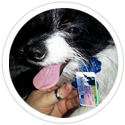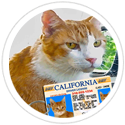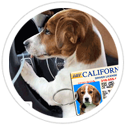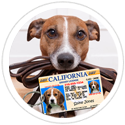Discover the art of safe and engaging play for your furry friend with our comprehensive guide to choosing the right dog toys. From size-appropriate picks to avoiding potential hazards, learn how to create a secure and enjoyable playtime experience for your canine companion. Ensuring the safety of your dog’s toys is crucial to prevent any potential hazards or injuries. Here are some dog safety tips for toys:
Choose size-appropriate toys:
Select toys that are suitable for your dog’s size and breed. Avoid toys that are too small and could be a choking hazard or too large and heavy, which may cause injury during play.
Avoid toys with small parts:
Dogs may chew or swallow small parts of toys, which can lead to choking or digestive issues. Avoid toys with small detachable parts that can be easily ingested.
Select durable materials:
Look for toys made from sturdy and non-toxic materials. Dogs are often enthusiastic chewers, so durable toys can withstand rough play and reduce the risk of ingesting harmful substances.
Inspect toys regularly:
Check your dog’s toys frequently for signs of wear and tear. If a toy is damaged, discard it immediately to prevent your dog from swallowing any small, broken pieces.
Avoid toys with strings or ribbons:
Toys with strings, ribbons, or any long, thin materials can be dangerous if ingested. They can cause choking or intestinal blockages. Opt for toys without these components.
Supervise interactive toys:
Some toys, like tug toys or rope toys, are best used with supervision. After playtime, put these toys away where your dog can’t access them, to prevent any accidents or chewing when unsupervised.
Choose non-toxic paint or dye:
If a toy is painted or dyed, ensure that the coloring is non-toxic. Dogs may lick or chew on toys, and toxic substances can be harmful if ingested.
Be cautious with tennis balls:
While tennis balls are commonly used for dogs, they can wear down over time and become a choking hazard if the outer layer is peeled off. Monitor the condition of tennis balls and replace them when necessary.
Avoid hard or sharp toys:
Toys that are too hard or have sharp edges can cause dental damage or mouth injuries. Opt for toys that have some give and are designed for dog’s teeth.
Rotate toys regularly:
Dogs can get bored with the same toys. Rotate their toys to keep them engaged and interested in their playthings.
Avoid toys with squeakers:
While dogs love squeaky toys, the squeaker can be a choking hazard if they manage to remove it from the toy. If your dog is an aggressive chewer, avoid toys with squeakers altogether.
Supervise playtime:
Always supervise your dog during playtime, especially with new toys. This way, you can ensure their safety and intervene if necessary.
By following these dog safety tips for toys, you can create a safe and enjoyable play environment for your furry friend, promoting physical activity, mental stimulation, and overall well-being.




